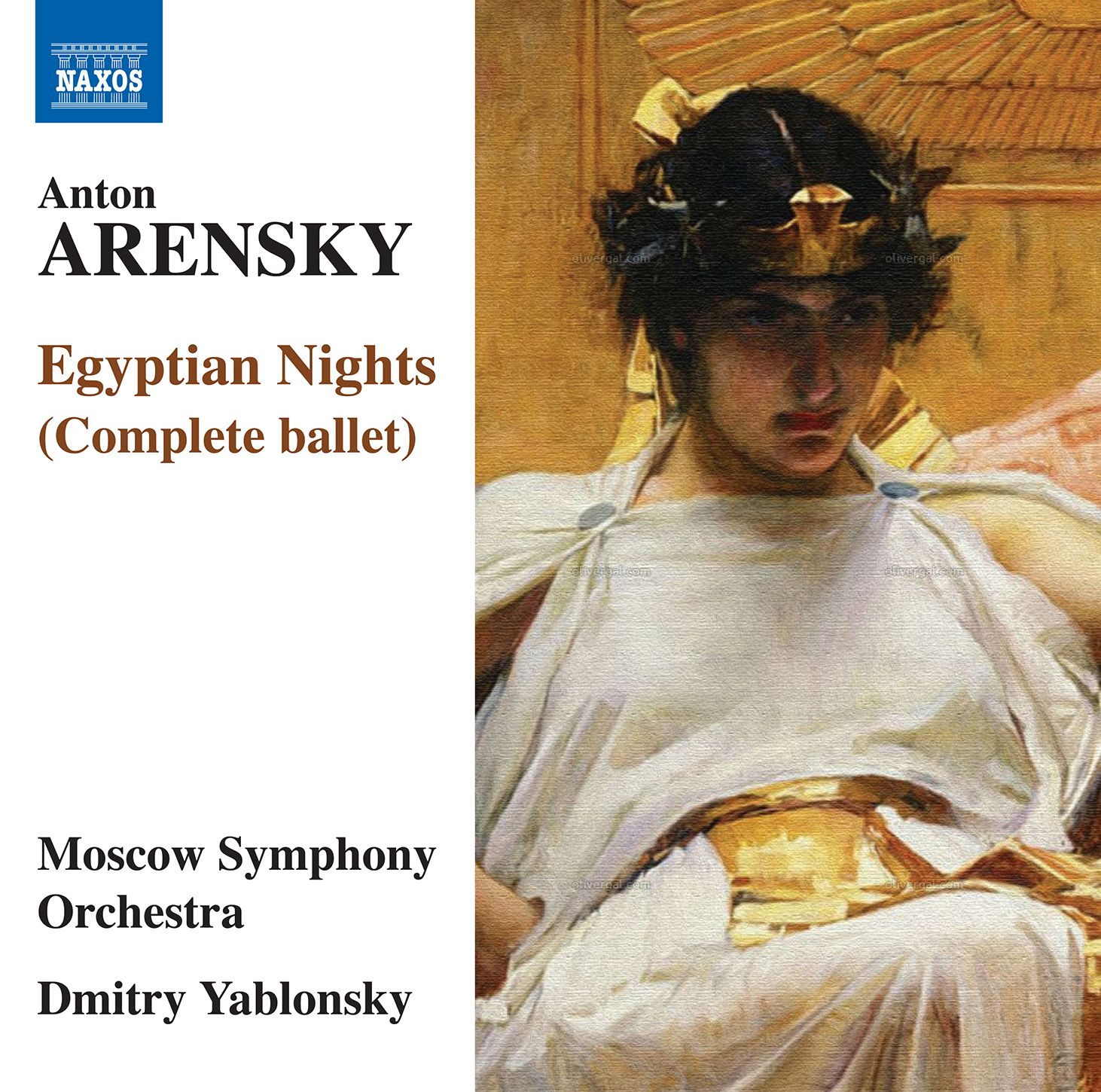Egyptian Nights: an Arensky ballet (plus a PIano Trio!)
The music of Anton Arensky has long been due serious reappraisal. Perhaps these two discs can point us in that direction ...

Perhaps best known as a teacher (of Rachmaninov and Scriabin, for example), Anton Arensky (1861-1906) was a noted composer in his own right. Arensky was taught by Rimsky-Korsakov at the St Petersnurg Conservatory. His music is characterised by a real mastery of harmoy and counterpoint (he moved immediately from graduation at St Petersburg to a teaxhing post at the Moscow Conerervatory) . He died aged 44 of tubercuolsis.
Arensky's ballet Egyptian Nights, based on Pushkin, was published by the Moscow firm P. Jurgenson in 1900. You can view the score here. It is a story of forbidden love between the handsome Amoun, an accomplished hunter, and Cleopatra. The acual plot is doggerel: akthough betrothed to the country girl Brerenice, Amoun decalred his love tfor Cleopatra by shooting a message attached to an arrow to a tree abover her head. Her response gives decidedly mixed messages: she likes him and grants him teh kiss he wants, but also orders he must die by poinson at dawn the next day. Amoun drinks the lethal potion: exeunt Cleopatra and Mark Anthony. But the iIgh Priest has given Amoun a harmless drink and Berenice, who is clealry of a forgiving mature, takes him back. It was written to celebrate a visit to St Petersburg by the Shah of Persia, but only received its first performance under Diaghilev in Paris in 1908.
Balletophiles will love this, as will Russophiles. The scoring is often light and always expert (try the 'Danse des Juives'). The part for solo violin (Alexander Avramenko here) is superb here':
The Poisoning Scene sounds like pure Rimsky - listen to the contours of the melodies and their ochestration:
The music is ever-deligtful. Try the pipings of piccolo contrasted with weightier scoring around it in the 'Danse des Égyptiennes':
or the rollocking, swaggering 'Danse des Ghazies':
Worthwhile noting this is a reissue of a releasde originally on the higher-priced Marco Polo label. Also, the Suite was reciorded by Yevgeny Svetlanov: in 2008 the Svetlanov Foundation issued three discs of Svetlanov conducting Arensky. And if you want to hear the Yablonsky performance complete, here it is (note that although the covers shown of excerpts are the Marco Polo cover, the performances are exactly the same):
... meanwhile, over on Orchid Classics, the Danish Trio Con Brio Copenhagen has relased a recording of Arensky's Piano Trio No. 1 in D minor, Op. 32 (1894) coupled with Shostakovich's Piano Trios No. 1 in C minor, Op. 8 (in one movement, 1923, an ardent love letter in sound) and No. 2 in B flat, Op. 67 (1944). A rather nice handing over of the baton here: Shostakovich was born in 1906, the very year Arensky died; Arensky comes from the time of Imperialist Russia, the time of teh Tsar; Shostakovich very much from Communist Soviet Union. Iteresting to contrast Shostakovich's Piano Trio No. 1 (someties labelled 'Poème') with the first movement of the Aernsky. Certail;y in the Shostakovich we hear infinite yearning in the slower passages, while the faster ones leave us in no doubt as to the composer. Fabulously expressive playing here, especially from the cellist SooKyung Hong:
The first movement of the Arensky Piano Trio is no less emotive, but more obviously held within formal constraints:
(... and here's a live performance as a bonus, to go with it):
The balance between formal requirements and the sheer variety of material is revelatory. Also around the 6"30 mark in the recording of the first movement one can hear Jens Elvekjaer's terrific ease of delivery at speed (legerdemain), something we ecounter full-on in the deliciously light Scherzo:
The Largo is an elegy, written as an in memoriam for the Russian cellist Karl Davydov, a musician who earned the nikname "Tsar of cellists". No surprise that there are long and expressive cello lines (beautifully played by Soo-Kyung Hong); tehre are also incredibly delicate textures too thanks to Arensky's miraculous scoring (try between 3 and 4 minutes in):
Just over 20 years after his first Piano Trio, Shostakovich wrote his Piano Trio No. 2. It is in this piece that he makes pronounced use of Jewish music for the first time. Teh contrast between the big-boned finale of the Arensky and the ethereal Shostakovich Second Trio is utterly remarkable - and a stroke of programming genius Shostakovich's piece can wait for another post - and I am sure we will refer back to this performance when the time comes.
The music of Anton Arensky has long been due serious reappraisal. Perhaps these two discs can point us in that direction ...
